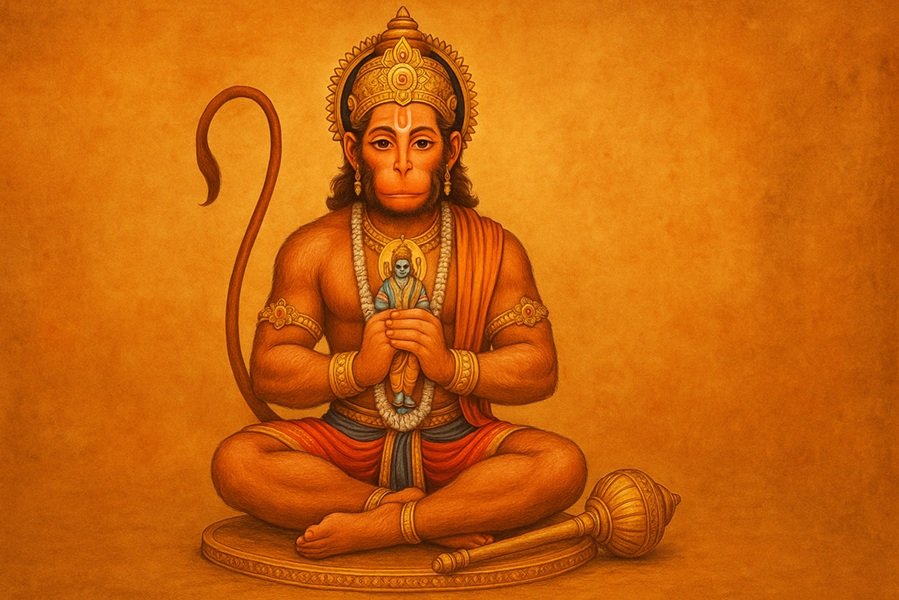
Introduction
Lord Jhulelal, the Ishtadeva (chief deity) of the Sindhi community, is a revered spiritual figure whose legend is deeply woven into the cultural and religious fabric of Sindhis worldwide. He is venerated as the savior of the Sindhi people, particularly in times of religious oppression, and is regarded as an incarnation of Lord Varuna, the Hindu god of water. His worship transcends religious boundaries, uniting Hindus and Sufi Muslims alike in devotion.
The Legend of Lord Jhulelal
The legend of Jhulelal dates back to the 10th century in Sindh (now in Pakistan). During that time, Sindh was ruled by a tyrannical king named Mirkhshah, who sought to forcibly convert Hindus to Islam. Distressed by this oppression, the Hindus prayed to the River God, Varuna, for a savior. After forty days of fasting and devotion, a divine voice assured them that a child would be born to save them.
Soon, in Nasarpur, a pious couple, Devaki and Rattanchand Lohana, were blessed with a miraculous child. This child, named Uderolal, displayed divine powers from a young age. It is said that as a baby, his cradle would rock on its own, leading to the name ‘Jhulelal’ (meaning ‘swinging child’).
As he grew up, Jhulelal performed many miracles, demonstrating his divine nature. When brought before Mirkhshah, he appeared as an old man and a young boy simultaneously, and he warned the king to allow religious freedom or face divine wrath. Unwilling to listen, the king attempted to kill Jhulelal, but every effort failed. Eventually, realizing the futility of his efforts, Mirkhshah relented, and religious tolerance was restored in Sindh.
Symbolism and Iconography
Lord Jhulelal is often depicted seated on a Pala fish (golden fish), which is considered sacred in Sindhi culture. This fish is believed to be a manifestation of Lord Varuna, symbolizing divine protection and sustenance. He is usually shown with a white beard, signifying wisdom, and holds a book and prayer beads, representing knowledge and devotion. In some depictions, he is seen with a flame on his palm, symbolizing divine power.
Worship and Sindhi New Year (Cheti Chand)
One of the most significant festivals associated with Jhulelal is Cheti Chand, the Sindhi New Year. Celebrated on the second day of the Chaitra month (March-April), it marks the birth anniversary of Lord Jhulelal. On this day, Sindhis worldwide perform a ritual called Bahirana Sahib, where they take an idol or representation of Jhulelal to a water body, accompanied by prayers and bhajans (devotional songs). The festival is a grand occasion filled with music, dance, and community feasts.
Devotees also chant the sacred phrase “Jai Jhulelal” as a form of greeting and invocation, reinforcing their faith in his divine protection.
Influence and Spiritual Legacy
Jhulelal is not just a religious figure but a symbol of resilience, unity, and harmony. His teachings emphasize peace, tolerance, and devotion, making him relevant even today. His followers include not just Sindhi Hindus but also Sufi Muslims, who revere him as Khwaja Khizir, a spiritual guide associated with water and protection.
Many Sindhi diaspora communities across the world have built temples and shrines dedicated to Jhulelal, particularly in India, the USA, and the UK. These temples serve as cultural and spiritual centers, keeping Sindhi traditions alive.
Conclusion
Lord Jhulelal continues to be a guiding force for the Sindhi community, representing their faith, heritage, and spiritual strength. His story is a reminder that righteousness and devotion ultimately triumph over oppression. Through Cheti Chand celebrations, prayer gatherings, and his teachings, Jhulelal’s legacy endures, inspiring generations to walk the path of truth, unity, and compassion.
Jai Jhulelal!







